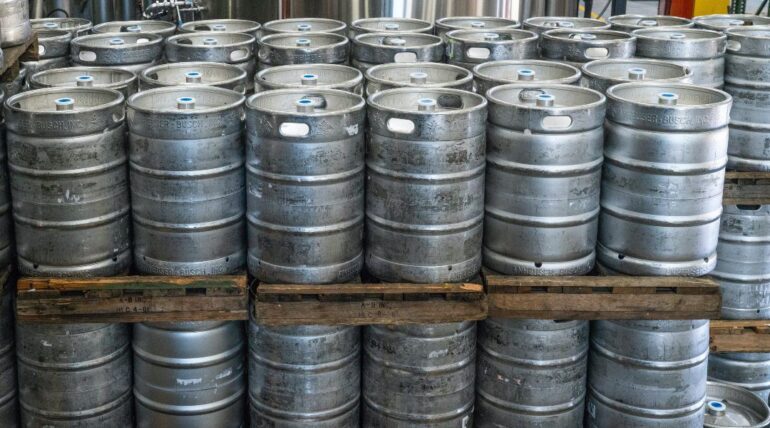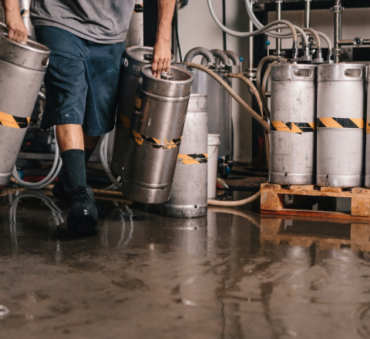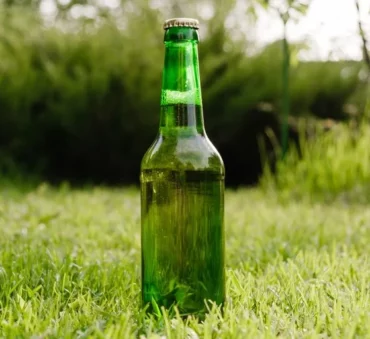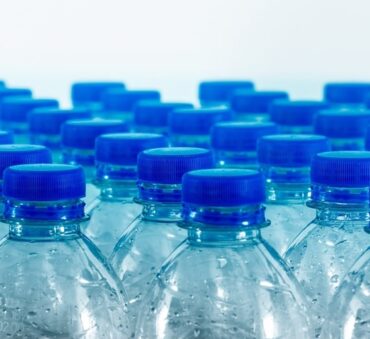We all know that wine bottles need to be stored under specific conditions in order to preserve their qualities and extend their longevity.
But beer, too, demands proper storage to prevent premature expiration.
From temperature and packaging to bottling dates and beer varieties, a multitude of factors come into play.
Besides preserving beer’s exceptional quality, proper beer storage is also about averting common pitfalls—recognizing when a beer has turned, and how to extend its shelf life.
Let’s uncover all the secrets of beer storage, some common mistakes, different beer cellaring methods, and other considerations.
Key Takeaways
- Understanding how aging affects beer’s taste and quality is crucial for extending your beer’s shelf life.
- Proper beer storage involves maintaining the right temperature, shielding it from light, and ensuring minimal exposure to oxygen.
- Avoid common beer storage mistakes like neglecting cleanliness and exposing beer to varying humidity levels.
- Innovative technologies like cellaring apps and temperature control devices can help you provide optimal storage for your beer.
Understanding Beer Expiration
Imagine this: You’ve invested time and effort into aging your premium beer, and when you finally open it for a tasting, an unexpected and unappealing flavor greets you. It’s a situation that every beer producer wants to avoid, especially when dealing with aged brews.
Understanding beer expiration is your key to avoiding this experience.
Beer expiration isn’t just about a date on a bottle – it’s a complex interplay of time, elements, and ingredients.
Can Beer Expire?
Technically, beer does not expire in the same way as other perishable goods. So, it is safe to consume it after its expiration date.
But what exactly happens to beer after an extended period of time?
Over time, subtle chemical reactions occur within the brew, influencing its taste and quality. While some beers benefit from aging, most are best enjoyed fresh.
So, while it’s ok to consume expired beer, you might notice a few signs that signal its transformation. You might observe:
- Lack of foam
- Flatness in taste
- Sediment settling at the bottom of the bottle
Factors Influencing Beer Expiration
From the choice of ingredients to the brewing process and even alcohol content, a beer’s shelf life is a complex equation.
Here are the different factors that influence this beverage’s shelf life:
- Ingredients: Hops, for example, are known for their preservative qualities.
- Malt and yeast: The choice of malt and yeast can also influence beer’s aging potential.
- The brewing process: Pasteurization and the type of container used for storage play vital roles in beer’s longevity.
- Alcohol content: A higher alcohol content often acts as a natural preservative, slowing down the aging process.
But how can you handle expired beer, especially when dealing with larger quantities? Even when a beer has seen its better days, it can find new life through expired beer recycling processes, contributing to a more sustainable future.
How to Store Beer: Proper Storage Techniques
Maintaining optimal storage conditions is vital when it comes to extending the lifespan of your beer. Light, temperature, humidity, and a few other factors play pivotal roles in preserving the beer’s taste and quality.
Here are a few guidelines you can follow:
- Shield from light: Beer is sensitive to light, especially UV rays. Store your bottles in a cool, dark place, away from direct sunlight or fluorescent lighting to prevent the dreaded “skunky” taste.
- Optimal beer storage temperature: Each beer style has its preferred temperature range. Generally, keeping your beer between 45°F and 60°F (7°C to 16°C) ensures it ages gracefully.
- Maintain steady conditions: Avoid temperature and humidity fluctuations, as they can harm the beer. Find a storage spot, where you can maintain stable conditions.
- Mind the humidity: Maintain a humidity level of around 50-70% to keep the corks or caps from drying out, especially in the case of cork-sealed bottles.
- Store upright: Storing beer upright reduces the surface area exposed to air. This minimizes the potential for oxidation.
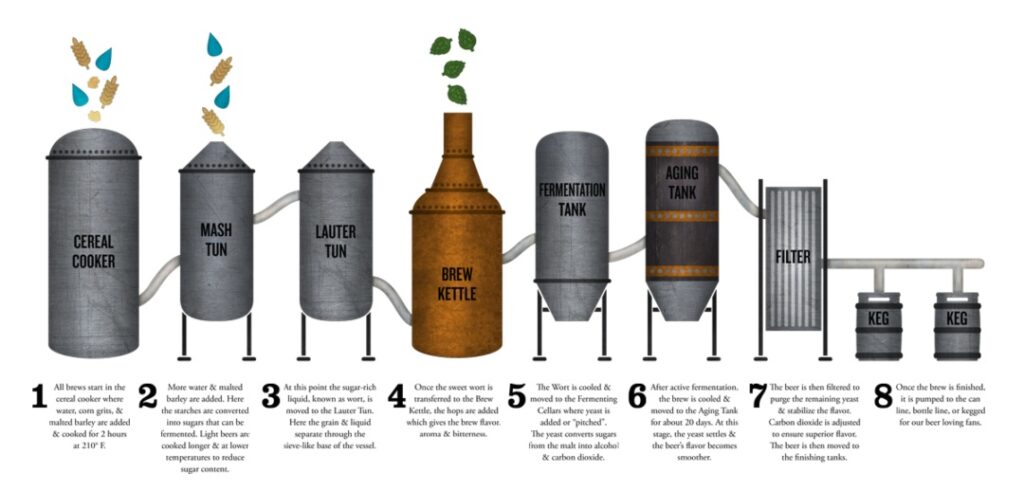
Advanced Beer Cellaring: Selecting Beers for Cellaring
Not all beers are created equal when it comes to cellaring. For example, low-ABV beers, lagers, and hoppy beers (IPAs and Pale Ales) are best enjoyed fresh.
The decision to age a beer depends on its style, alcohol content, and dominant characteristics. Here are some of the beer types suitable for cellaring:
- Barleywines: These robust ales, known for their high alcohol content and rich maltiness, are excellent candidates for cellaring. Barleywines can develop complex flavors over time.
- Imperial stouts: With their bold flavors and elevated ABV, imperial stouts can benefit from aging, allowing them to mellow and mature.
- Belgian style quads: These strong ales from Belgium are known for their depth and complexity. Their higher alcohol content contributes to their cellaring potential.
- Barrel-aged sours: With barrel aging sour beers can evolve beautifully in the right conditions.
- Rauchbiers: These smoked beers, although lower in ABV, can age gracefully and transform in flavor.
But for how long can you age these beers?
While some beers, like Porters, should be enjoyed within 1 to 5 years of bottling, others, such as barrel-aged sours or Imperial Stouts, can mature beautifully over a decade or more. The key is experimentation and note the changes in flavor, aroma, and texture as your beer ages.
The Impact of Temperature on Beer Quality
Temperature influences the taste, aroma, and overall quality of your brew. Even small shifts can affect your brew’s character. Let’s cover how temperature influences beer qualities:
To prevent beer from falling victim to early expiration, you need to store it at the right temperature, which depends on the beer type, but it generally should be below room temperature and above freezing.
For example:
- Stronger beers like Imperial Stouts and Dark Ales should be stored at 53 to 60 degrees Fahrenheit (12-16 degrees Celsius).
- Standard ales like IPAs and Pale Ales should be stored at 50 to 53 degrees Fahrenheit (10-12 degrees Celsius).
- Lighter beers like Lagers and Pilsners should be stored at 44 to 50 degrees Fahrenheit (7-10 degrees Celsius).
Special Considerations for Different Beer Types
Craft beers, kegs, and growlers each come with their unique storage needs. While craft beers often boast complex flavors, they can be more sensitive to temperature and light. Properly storing them enhances their intricate profiles.
On the other hand, kegs and growlers offer convenience but require airtight seals to prevent beer oxidation.
Let’s cover the ideal storage conditions for these specific beer types:
Craft Beer Storage
Craft beers, celebrated for their intricate flavors, often demand extra care in storage.
Their diverse brewing styles and unique ingredients can make them more sensitive to environmental factors.
To ensure the perfect storing conditions you should:
- Avoid frequent temperature fluctuations, as they can disrupt the aging process and impact the beer’s quality. To do that you can invest in a dedicated beer fridge or cellar for precise temperature control.
- Store your beers in dark or opaque containers, such as brown bottles or cans, to block out harmful UV rays. If you use clear or green bottles, keep them in a dark storage space or cover them with a cloth.
- When opening a craft beer, pour it gently into a glass to minimize contact with air. Consider investing in a bottle capper or cap resealer to seal opened bottles tightly. For long-term storage, consider transferring the beer to smaller, airtight containers to reduce oxygen exposure.
Storing Beer in Kegs and Growlers
When it comes to beer storage, kegs and growlers offer excellent options for those who enjoy draft beer or want to take their favorite brews on the go. Here are some best practices to ensure your beer remains fresh and flavorful:
For Kegs:
- Cleanliness is key: Before filling a keg, ensure it is thoroughly cleaned and sanitized. Any residue or contaminants can negatively affect the beer’s flavor.
- Maintain proper pressure: Proper CO2 pressure is crucial for kegged beer. Too much pressure can over-carbonate the beer, while too little can lead to flatness.
- Keep it cold: Kegs should be stored in a refrigerated environment to maintain the beer’s quality. The recommended beer keg storage temperature range is typically between 38-45°F (3-7°C).
If you have expired beer kegs that are unsuitable for storage or consumption, consider beer keg decanting as a responsible way to manage beer waste.
For Growlers:
- Clean and dry: Always start with a clean and dry growler. Any residual moisture or contaminants can spoil the beer.
- Consume promptly: Unlike kegs, growlers are not airtight and are best consumed shortly after filling. Aim to enjoy the beer within a few days to a week to preserve freshness.
- Avoid sunlight: The beer growler storage should be away from direct sunlight, as UV rays can cause off-flavors and spoilage.
- Refrigerate when possible: If you can’t finish the growler in one sitting, store it in the refrigerator. The cooler temperature helps slow down any potential deterioration.
Avoiding Common Beer Storage Mistakes
Ensuring your beer stays fresh and flavorful requires attention to detail. Here are common beer storage mistakes to avoid and how to prevent them:
Storing Beer in Varying Humidity Levels
Beer storage environments with fluctuating humidity levels can wreak havoc on your collection. High humidity can lead to moldy labels, while low humidity may cause the corks to dry out, potentially letting air seep into the bottles.
To prevent these issues, aim for a humidity range of 50-70%. Use a hygrometer to monitor levels and employ a humidifier or dehumidifier as needed.
Fluctuating Temperature Levels in Your Storage
Consistency is key when it comes to beer storage.
Fluctuating temperatures can wreak havoc on your brew, causing it to age prematurely and lose its intended flavors.
To ensure your beer remains in optimal condition, consider a dedicated beer fridge or a cool, dark spot in your home with minimal temperature variations. This meticulous control over temperature ensures each sip delivers the taste the brewer intended.
Neglecting Cleanliness in Storage Areas
Overlooking cleanliness in your beer storage space can invite unwanted guests like mold and bacteria. Those can taint with your beer’s flavor and quality.
To prevent this, keep your storage area clean and well-maintained. Regularly inspect for any signs of contamination, such as mold or pest infestations. Wipe down surfaces, shelves, and storage containers to maintain a sanitary environment.
Not Considering Beer’s Shelf Life
Failure to acknowledge beer’s shelf life can lead to disappointment when you finally crack open a bottle.
To avoid this pitfall, keep track of the recommended shelf life for each beer type you own. Use a labeling system to indicate purchase dates and ideal consumption timelines. This way, you’ll always enjoy your beer when it’s at its best, ensuring a consistently delightful tasting experience.
Mixing Strong-Smelling Substances in Storage
Storing beer in proximity to strong odors like gasoline or fertilizers can lead to unwanted flavor contamination. This is especially true for cork-sealed, bottle-conditioned beers, which are more susceptible.
To prevent this, designate a storage area free from pungent odors and keep your beer in a clean and odor-neutral environment. This way, your brews won’t end up with unexpected aromatic notes, preserving their intended flavors for your enjoyment.
Innovative Beer Storage Solutions
There are some cutting-edge solutions that are reshaping the way we keep our brews in peak condition. Let’s explore some of these:
- Cellaring apps: Modern cellaring apps are like personal beer sommeliers. They help you track your collection, recommend optimal aging times, and alert you when a beer reaches its prime.
- Temperature control devices: Smart temperature control systems ensure your beer is kept at the perfect temperature levels, preserving its flavors. Some even allow remote monitoring via smartphone apps.
- UV-resistant glass: Bottles with UV-resistant glass protect your beer from harmful light, preserving freshness.
- Vacuum sealers: These handy devices remove excess oxygen from opened bottles, extending the life of your beer after it’s been exposed to air.
- Kegging innovations: For bars and breweries, keg storage solutions have become more efficient, with features like automated temperature control and monitoring systems.
But if you find yourself with beer that’s no longer suitable for storage or consumption, remember that beer waste recycling is an eco-friendly option to ensure it doesn’t go to waste.
Conclusion: Navigating Beer Storage and Waste Solutions
Understanding the nuances of beer storage is essential for producers and distributors. Proper temperature, protection from light, and avoiding common pitfalls can ensure the quality of your beer products.
However, when it comes to managing the inevitable beer waste, partnering with experts like Shapiro can make all the difference. With our beer waste recycling services and industry knowledge, you can rest assured that we will efficiently manage all your expired beer. Let us turn your beer waste into a sustainable, eco-friendly solution.
Baily Ramsey, an accomplished marketing specialist, brings a unique blend of anthropological insight and marketing finesse to the digital landscape. Specializing in educational content creation, she creates content for various industries, with a particular interest in environmental initiatives.
